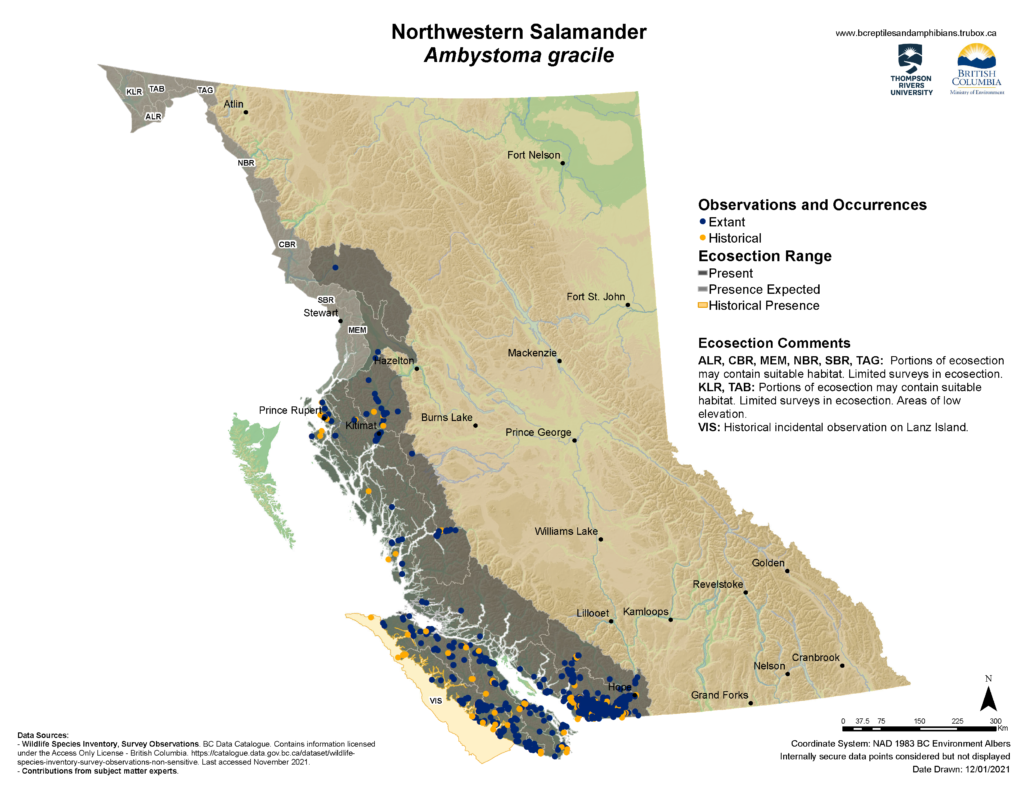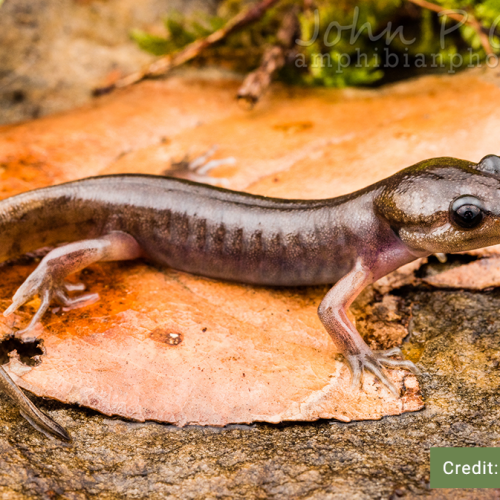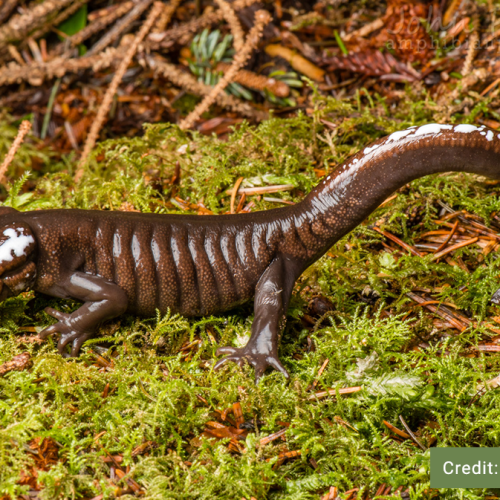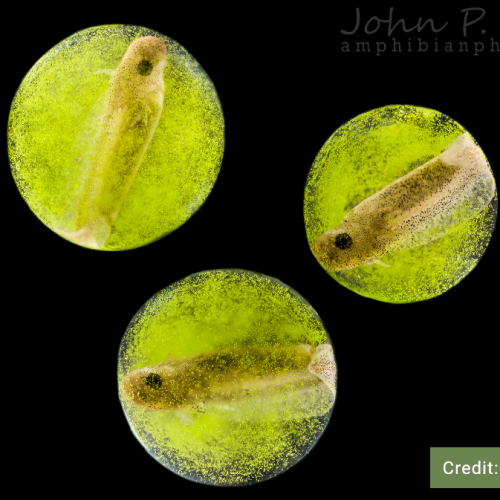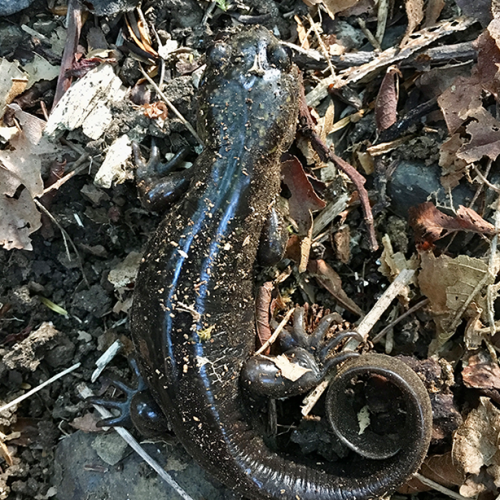Credit: Natalie McNear
Northwestern Salamander
Ambystoma gracile
Description
The Northwestern Salamander is a large salamander that can reach a total body length of up to 24 cm. They are typically a uniform dark black, but may also be grey or black, and may have light flecking on their back. The belly is usually light cream-brown and may have yellow or white speckling. They have large, dark eyes that protrude from a broad head. They are easily identified by their large parotid glandsDefinition:An external skin gland on the back, neck, and/or shoulder of some toads, frogs, and salamanders, usually visible as a bump. It can secrete a number of milky alkaloid substances which help deter predators. behind the eyes, enlarged glandular ridge along the top of a laterally compressed tail, and 10-12 prominent costal groovesDefinition:Grooves along the sides of a salamander’s body that increase the surface area of the skin and creates channels for water to flow and collect on their body. This is important to prevent their skin from drying out.. Some populations near permanent ponds or lakes that do not freeze solid in the winter will display neotenyDefinition:The retention of juvenile characteristics in an adult. In amphibians, particularly amongst salamanders, neotenic individuals mature to a reproductive stage without fully undergoing the process of metamorphosis from aquatic larva to land-based adult., where individuals will retain aquatic larval characteristics into adulthood and remain aquatic. Neotenic individuals will typically grow larger than their terrestrial counterparts. Northwestern Salamander larvae are generally brown, black, green with light mottling and have feathery gills behind the head, front and back legs, and long tail fins.
Listen to the Indigenous words for “salamander” here!
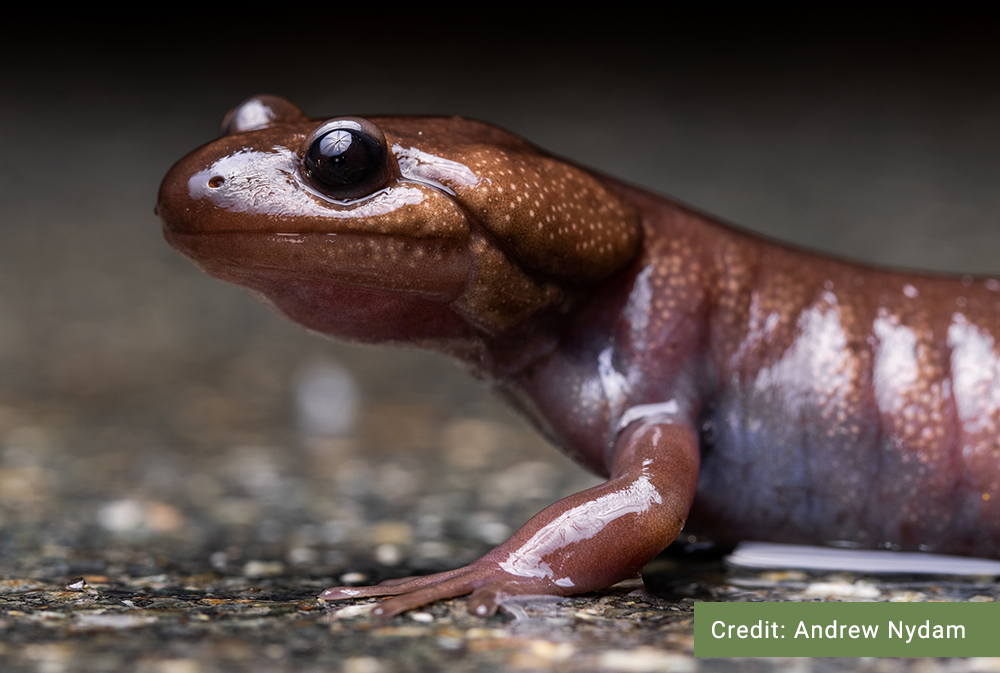
Similar Species

Distribution
The Northwestern Salamander is found in North America west of the Coast and Cascade mountains from southeast Alaska, through British Columbia, and south to northwestern California. In British Columbia they are primarily found in the southwest corner of the province along the mainland coast and on Vancouver Island. There are two recognized subspecies in British Columbia:
The Brown Salamander (Ambystoma gracile gracile) found on the south coast and Vancouver Islands,
The British Columbia Salamander (Ambystoma gracile decorticatum) found north of Bella Coola.
Habitat
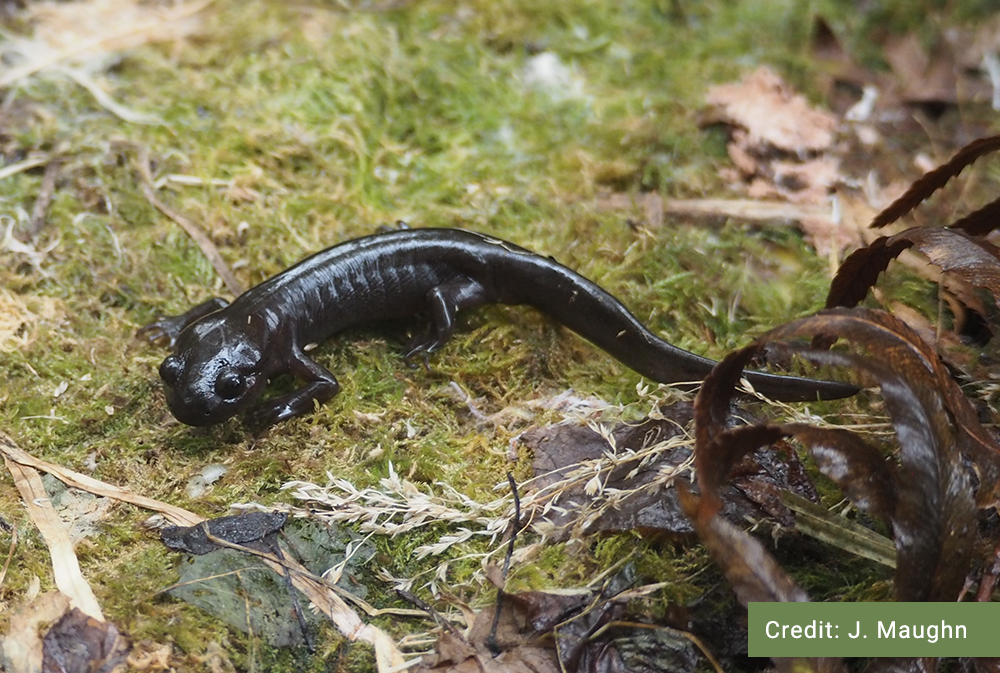
Reproduction
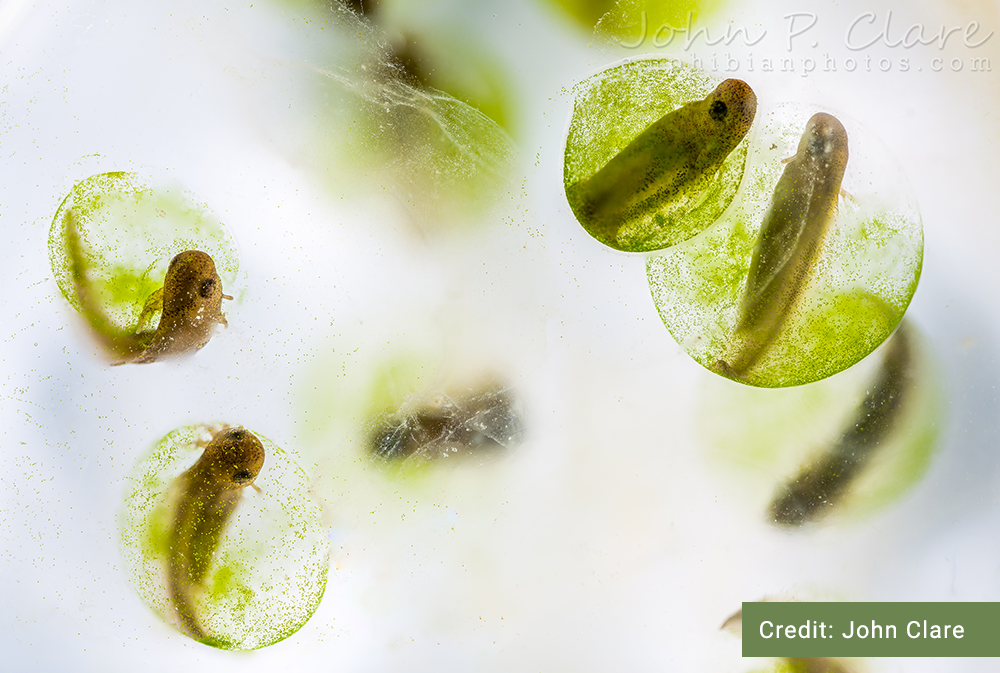
Diet
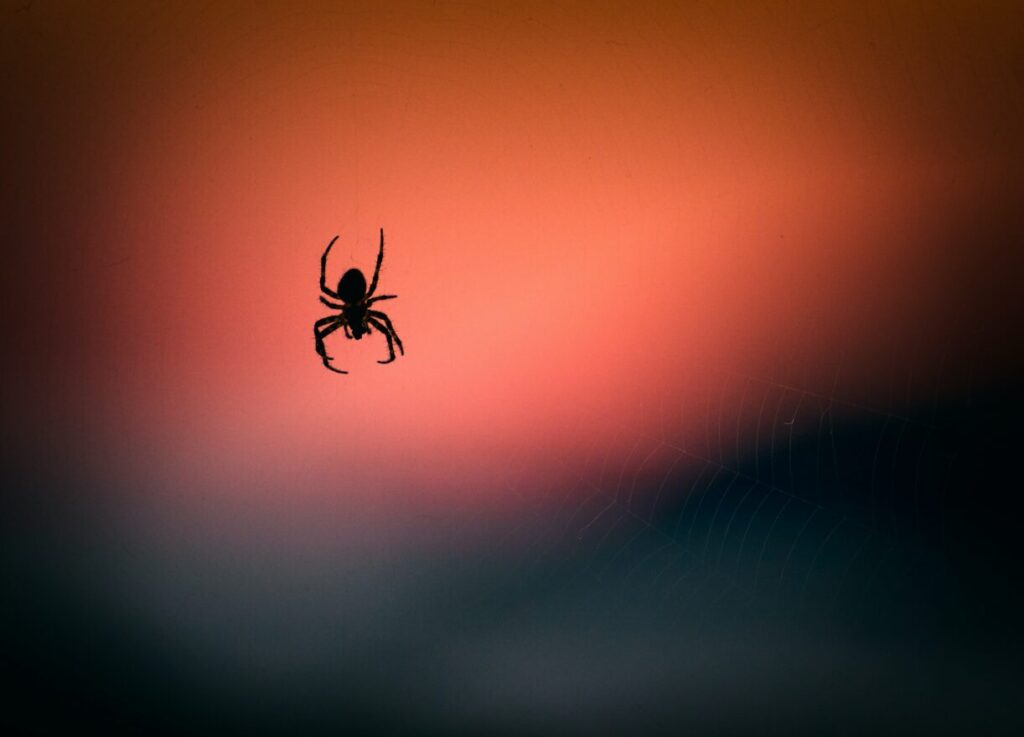
Conservation Status
Global: G5 (2016)
COSEWIC: NAR
Provincial: S4S5 (2016)
BC List: Yellow
Learn more about conservation status rankings here
Threats

Did You Know?
Fact #1
Fact #2
Fact #3
Species Account Author: Marcus Atkins
B.C. Conservation Data Centre. 1994. Species Summary: Ambystoma gracile. B.C. Minist. of Environment. Available: https://a100.gov.bc.ca/pub/eswp/ (accessed Jun 7, 2021).
B.C. Conservation Data Centre. 2016. Conservation Status Report: Ambystoma gracile. B.C. Minist. of Environment. Available: https://a100.gov.bc.ca/pub/eswp/ (accessed Jun 7, 2021).
B.C. Conservation Data Centre. 2021. BC Species and Ecosystems Explorer. B.C. Minist. of Environ. Victoria, B.C. Available: https://a100.gov.bc.ca/pub/eswp/ (accessed Jun 4, 2021).
Matsuda, B.M., D.M. Green and P.T. Gregory. 2006. Royal BC Museum handbook amphibians and reptiles of British Columbia. Royal B.C. Mus., Victoria, BC. 266pp.
http://a100.gov.bc.ca/pub/eirs/finishDownloadDocument.do?subdocumentId=7964
http://www.canadianherpetology.ca/species/species_page.html?cname=Northwestern%20Salamander
https://linnet.geog.ubc.ca/efauna/Atlas/Atlas.aspx?sciname=Ambystoma%20gracile

